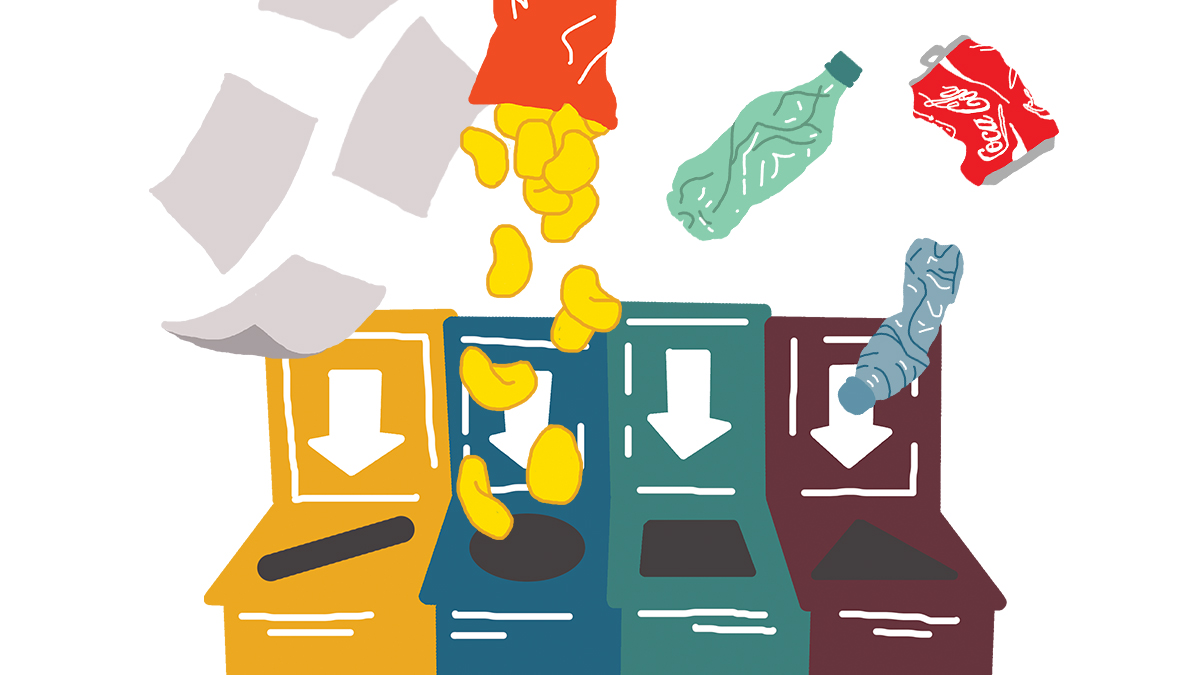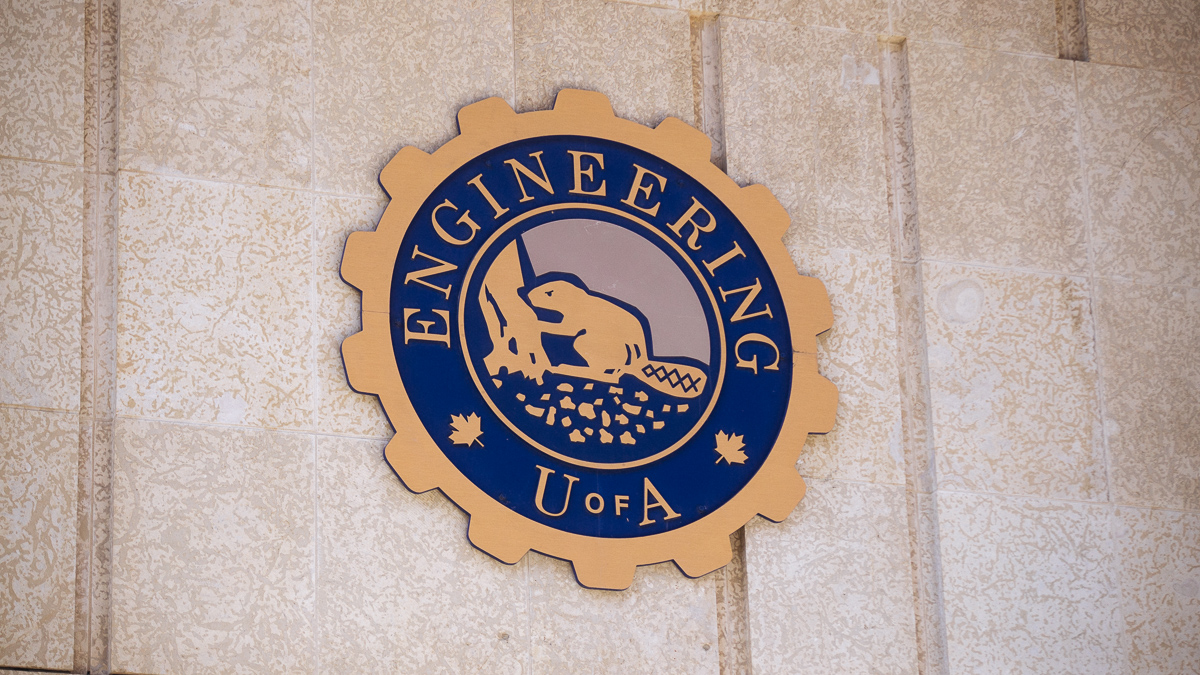The U of A actually has a high-tech garbage system
 Alex Patterson
Alex PattersonIn HUB Mall, a Subway patron has four options when disposing of the empty sandwich bag and crumpled napkins that remain from their meal: “Landfill,” “Recyclables,” “Mixed Paper,” and “Organics.” If the individual was reading correctly, they would throw the bag into “Recycling,” the napkins into “Organics,” and continue on their way to Tory to catch their afternoon class while forgetting about their garbage disposal experience.
For Daryl McCartney, executive director of the Edmonton Waste Management Centre of Excellence, the University of Alberta’s four-category waste bins are actually a product of engineering, psychology, and hours of sifting through waste.
“People tend to think of big facilities as state-of-the-art technology,” McCartney, also an environmental engineering professor, said. “But these little waste stations are actually state-of-the-art technology for getting people to separate things properly.”
At the University of Alberta, the colourful Zero Waste bins are fairly new, the first having been installed in Lister Centre and SUB in 2014. In February 2015, additional stations were placed in HUB Mall. The program is now expanding across the university, with the end goal of reaching 90 per cent of waste diversion by 2020. In 2014, the university diverted about 42 per cent. As of 2015, it diverts 55 per cent. Waste that isn’t diverted includes anything that is thrown into “Landfill” bins, and contaminated bags from other categories — for example, if dirty yogurt containers are thrown into the “Recyclables” bin, the entire bag must be thrown out into landfill.
The idea is to reduce the amount of material sent to landfills, said Jessie Kwasny, the U of A’s waste diversion and recycling coordinator. Materials such as paper and recyclable plastic have market values for recycling, and organic waste from food can be composted and converted to energy, Kwasny added.
“It’s a holistic approach.”
Vendors in HUB, such as Academy Pizza and Joe Coffee & Tea, found that sorting their garbage with the university’s system has made business cleaner.
“It makes our life easier,” Nadeem Jafri, with Joe Coffee & Tea, said. He added that the only challenge that came with implementing the system was with training employee habits when the venue started diverting waste more than a year ago.
“We reduce and recycle every day,” Eun Suk with Academy Pizza said. “I like it. It’s very comfortable and there’s no smell.”
The Zero Waste program is one of the U of A’s most recent initiatives contributing to the environmental movement. The movement began around 1962 with the publication of Rachel Carson’s Silent
Spring, which investigated how industry chemicals, such as DDT in agriculture, affected wildlife. People started to see water, air, and soil as vulnerable to contaminants, McCartney said. Groundwater needed to be protected from pesticides in run-off, air needed to be protected from smokestacks, landfills used liners to prevent waste from leeching into surrounding soil. But solid waste, which was not associated with any health risks, wasn’t thought about to the same extent, McCartney said.
“We were just consuming things.”
In the 1980s, the United States Environmental Protection Agency coined the term “solid waste.” It had been previously called “refuse.” The terminology change was to make people think they were wasting resources, McCartney explained. By the end of the decade, cities began recycling initiatives such as Edmonton’s Blue Bag program.
Organic waste programs are still in development — as of 2008, about seven per cent of Canada’s organic waste is diverted from landfill. And there are no consistent rules across Canada dictating how cities should deal with solid waste.
“I can go to any city in North America and find the wastewater treatment plant that treats to the same standard, same with drinking water,” McCartney said. “Solid waste is all over the map.”
The wide range of waste diversion practices can also be seen in Alberta: as of 2015, Calgary diverts 30 per cent of its waste, while Edmonton diverts up to 60 per cent and is using a waste-to-energy facility to bring the diversion rate up to 90 per cent.
Edmonton and U of A are taking their next steps to zero waste together with the construction of an anaerobic digestion facility, which uses bacteria to ferment organic waste to produce methane, then energy. The U of A’s sustainability plan aims to send 1,500 tonnes of organics to compost — currently, it’s only at 500 tonnes.
There is much more awareness on campus surrounding waste than before, sustainability coordinator Shannon Leblanc said. Student and food vendors are both improving their disposal habits. And as contracts come up for renewal, more vendors are agreeing to meet new sustainability goals, such as using biodegradable packaging and utensils, which will reduce waste overall, Leblanc said.
“That will be a slow change over the next few years,” Leblanc said. “We’re going to have less Styrofoam, and less confusion, by the time the digester opens.”
Correction: A previous version of this article stated that a plastic Subway bag should go into “Landfill” bins. Subway bags, in fact, are recyclable and should go in “Recycling” bins. The article has been changed to reflect this.




